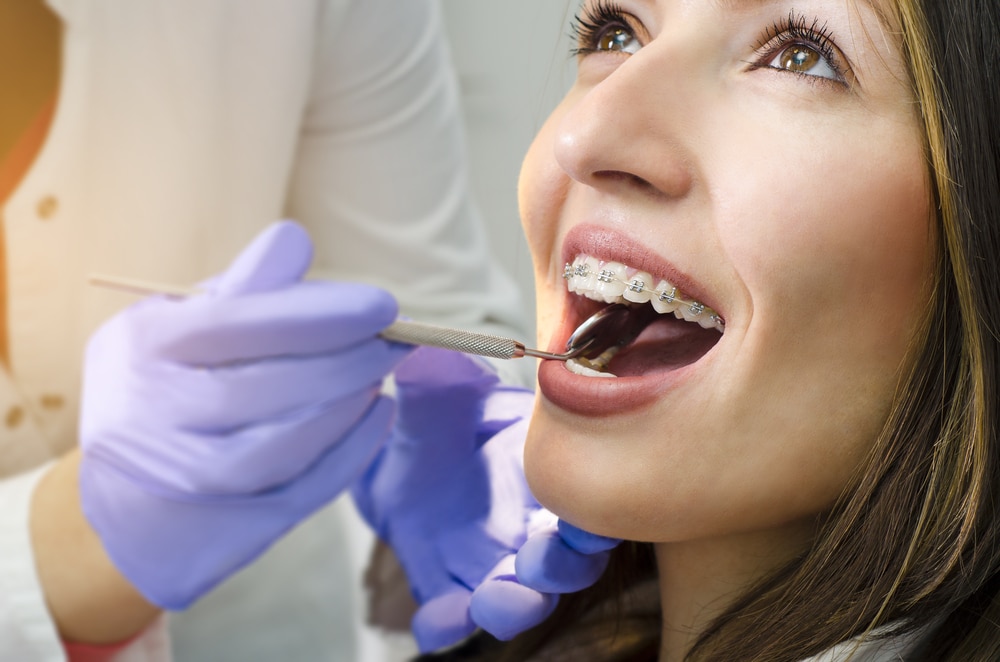
Dental Office Design Part 2: 4 Important Factors to Consider
December 23, 2023
What Are the Different Types of Dental Specialists?
February 15, 2024First off, both an orthodontist and a dentist are medical doctors who work on the mouth and teeth. Identifying what distinguishes an orthodontist from a dentist, however, is a matter of specialty. Specifically, an orthodontist is a type of dentist who has specialized their medical care to structural concerns of the mouth. Let’s explore further.
Orthodontist vs Dentist: The Difference
What is a Dentist?
A dentist is a medical professional who focuses their care specifically on treating the teeth, gums, and jaw. This work involves preventative care, such as teeth cleanings, applying fluoride, and oral examinations of the teeth, gums, and the surface and interior structure of the mouth and jaw. A dentist also treats oral health issues such as tooth decay (cavities), tooth breaks or chips, and gum disease. A dentist is a general practitioner of the teeth and mouth.

What is an Orthodontist?
An orthodontist is a dentist who specializes in diagnosing, preventing, and treating teeth and jaw irregularities. Their work involves correcti
ng irregular bites and misaligned, overcrowded, or out-of-place teeth. Some of this work is cosmetic, and some is corrective, addressing issues that can be detrimental to the overall health of teeth, mouth, and jaw structures. To treat these issues, an orthodontist may employ intervention treatments such as braces, permanent or removable retainers, aligners (like Invisalign), or mouthguards.
Orthodontist vs Dentist: The Education
What is the difference in education for an Orthodontist vs a Dentist?
Both a dentist and an orthodontist are medical doctors. Thus, both must complete the required undergraduate degree (usually a Bachelor of Science) and dental school training, which typically involves an additional four-year program comprised of biological science education and clinical application of dental practices. Accredited dental schools must follow the educational standards of the Commission on Dental Accreditation (CODA), and all dental students must pass the National Dental Board exams. As a dental specialist, an orthodontist continues their education beyond this eight-year plan, adding another two to three years of education in an accredited orthodontics residency program.
What types of degrees do Dentists and Orthodontists earn?
When completing a dental school program, a dentist earns either a DDS (Doctor of Dental Surgery) or a DMD (Doctor of Medicine in Dentistry or Doctor of Dental Medicine). These are, in essence, the same degree with the same type and level of education. Whether a dental student earns a DDS or DMD is determined by the university the student attends and which naming conventi
on that university chooses to apply to their degrees. Because an orthodontist is a dentist, they will also earn a DDS or a DMD. The additional years of training and education an orthodontist completes in order to become a specialist may result in a specialization certificate or the awarding of a Master’s Degree such as a Master of Science (MS) or a Master of Science in Dentistry (MSD).
Orthodontist vs Dentist: The Cost
What is the difference in costs for Orthodontic treatments vs traditional Dental treatments?
Unfortunately, there is no simple, satisfying answer to this question because both dental costs and orthodontic costs can vary drastically across practices. However, it is safe to say that, on average, a visit to an orthodontist and the associated specialized medical treatment performed by orthodontists are higher than the costs of the visit to and basic treatments performed by a non-specialist dentist.

Dental Costs
For example, most dental insurance plans include free annual or bi-annual visits to a Dentist, where a patient can receive an oral examination and cavity-preventing cleaning and fluoride treatments. When more invasive action is needed, such as a filling or root canal, insurance may cover as much as 50% or 80% of the cost, depending on the type of procedure. This means that the cost of a root canal and filling, which could range anywhere from $600 to $3,000, could be significantly reduced.
Orthodontic Costs
Since orthodontists are specialists, orthodontic treatments come at a premium. Add to this consideration that orthodontists do not perform the same kind of generalized oral health care like cleanings and fillings that regular dentists do, which are more typically financially supported by dental insurance. The end result for the patient then is a higher overall and out-of-pocket cost. For example, braces are one of the most common treatments performed by orthodontists. And if you are a child or young patient up to the age of 19, many insurance plans will cover your orthodontic care. However, few plans will cover the costs of adult braces. With the costs of braces ranging from $3,000 to more than $12,000, the increased costs of orthodontic care over non-specialized dental care become clearer.
Orthodontist vs Dentist: The Tools
Due to orthodontists’ specialized focus on teeth alignment, they have specialized tools that traditional dentists simply don’t use. Braces are one of those essential tools orthodontists use to correct overcrowded and misaligned teeth, as are retainers, which continue this work after braces are removed. The various instruments used to attach, calibrate, and remove braces are also specialized for orthodontic work.
Orthodontist vs Dentist: Shared Tools
Invisalign: Dentist vs Orthodontist
Dental aligners are another go-to tool for modern orthodontists. Aligners do much of the same work that braces do, but the process is slightly different. Instead of adhering metal or ceramic braces directly to the teeth, aligners are a custom-fitted series of retainer-like devices that are worn in sequence over a period of time to bring teeth into alignment, just like braces do. Unlike braces, aligners completely cover the teeth and are made of hard, clear plastic, so they are aesthetically less noticeable than braces. The most popular dental aligner system is Invisalign, which is offered by some Invisalign dentists who have received additional education in this particular system. However, it is important to note that Invisalign dentists do not have the same degree of expertise that orthodontists do.

The AlgerLight: Dentist vs Orthodontist
The AlgerLight with LED ceiling-mounted dental light is a unique medical instrument that can and is used by both dentists and orthodontists. Unlike classic dental lights, which may be attached to a rolling floor base or descended from the ceiling via an articulated arm, the AlgerLight with LED remains at a distance from the patient and practitioner, projecting a focused beam of clear, bright light where needed including into the depths of a patient’s mouth. The at-a-distance design of the AlgerLight with LED clears space on the floor and in the work area surrounding the patient and greater operatory, allowing all to move less encumbered. Created by a long-practicing orthodontist, David Alger, DDS, MSD, the AlgerLight with LED is versatile enough to accommodate the generalized needs of dentists and the specialty services provided by orthodontists.
Orthodontist vs Dentist: The Wrap-up
Knowing that all orthodontists are dentists but not all dentists are orthodontists is a good starting point for understanding the differences between these two titles. Dentists, with their more generalized approaches to oral healthcare, stand as distinct from the specialized focuses and treatments of orthodontists. Additionally, dentists and orthodontists differ in their education levels, related costs, and sometimes in their tools. However, there is overlap for this last consideration, as is illustrated by both dentists’ and orthodontists’ uses of the AlgerLight with LED.
The Alger Blog is dedicated to providing educational materials that are helpful, engaging, and informative. Visit our site to read additional material on the dental industry, light technology and more on the Alger Blog.



